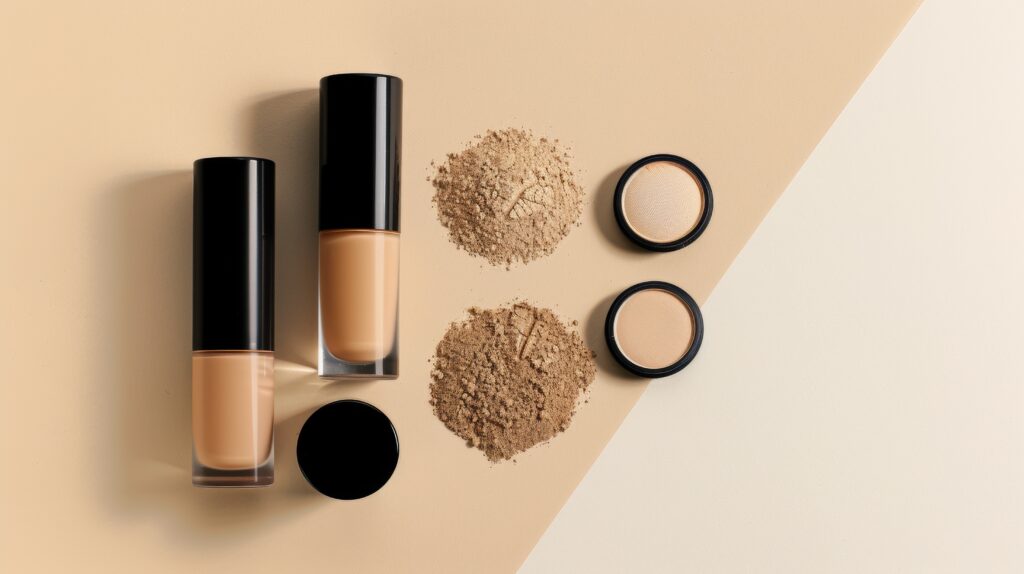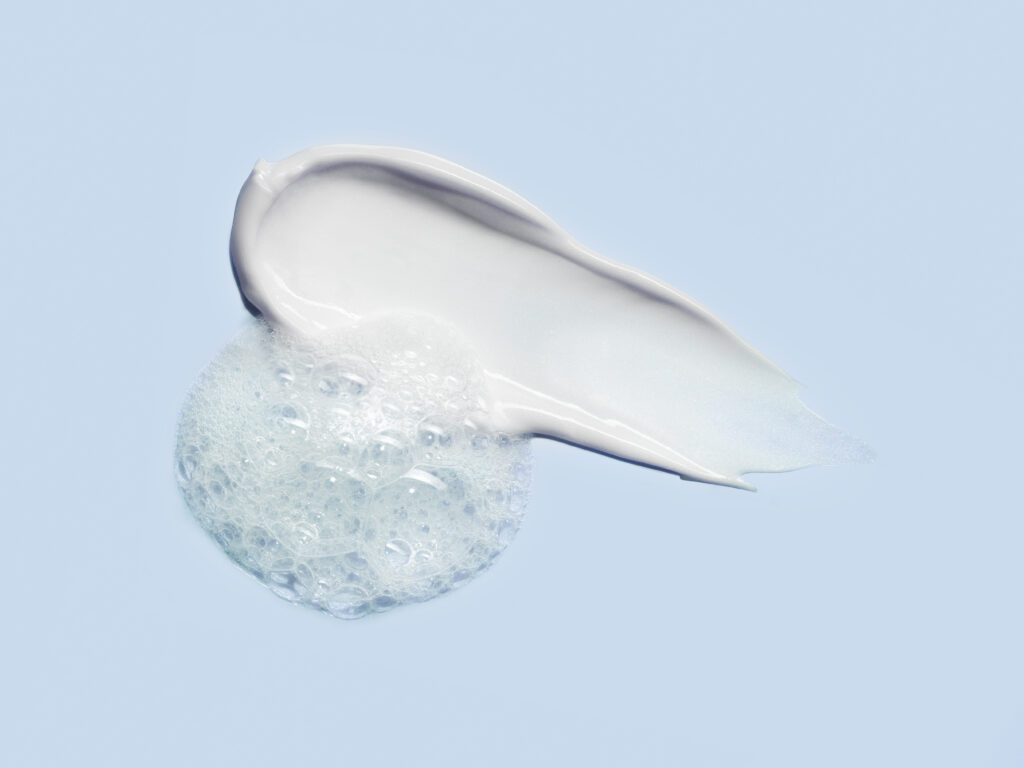The Pursuit of Protection Without Penalty
Cosmetic formulators face a recurring trade-off: pushing sun protection higher often pushes texture, skin feel, and consumer acceptance in the wrong direction. Thicker films, chalky cast, and an after-feel that resists rub-in are typical side effects of raising inorganic filter loads or stacking multiple organic filters. The outcome is predictable—formulas that excel in the lab are rejected by real users for daily wear.
There is a more efficient path. Evidence from peer-reviewed and industry literature shows that “SPF boosters” and intelligently selected inorganic materials can improve the way a sunscreen film organizes on skin. In practice, that means increasing measured protection without simply adding more classic filters. For hybrid systems—organic + mineral—this is the fastest route to high SPF that still spreads, slips, and wears like modern skincare. Recent reviews also recognize hydroxyapatite (HAp) as a credible inorganic UV-interacting material, opening a practical avenue to lighten aesthetics while safeguarding performance.
Why “Just Add More Filter” Doesn’t Scale
First, there’s aesthetics. Inorganic actives like titanium dioxide and zinc oxide are reliable UV shielders, but they are also the reason many consumers describe mineral sunscreens as “chalky” or “mask-like.” A contemporary narrative review for clinicians and formulators notes the visible white cast inherent to these particulate systems—excellent at blocking light, yet frequently cosmetically unacceptable for daily use. This remains a key adoption barrier, especially for deeper skin tones and tinted formats intended for daily, indoor–outdoor wear.
Second, there’s regulatory and consumer pressure. Global markets continue to scrutinize UV filters for systemic exposure, endocrine signals, and aquatic impact. While the science is nuanced, the directional pressure is consistent: use filters more intelligently, avoid overloading systems, and deliver protection with fewer compromises. Narrative overviews in the medical and dermatologic literature frame these tensions clearly, encouraging innovation in film-forming strategies, dispersion quality, and the integration of benign auxiliaries that enhance protection without increasing nominal filter concentration.
Third, there’s process risk. Simply increasing solids or stacking filters often destabilizes emulsions, increases viscosity beyond target, and amplifies batch-to-batch variability. These shifts complicate scale-up, introduce shade drift in tinted systems, and ultimately elongate time-to-market. Recent open-access research on SPF boosters shows why this happens: rheology and film structure are coupled with optical outcomes. Poorly tuned emulsifier systems or boosters used outside their optimal concentration windows can hurt spreadability and reduce measured SPF rather than improve it. Conversely, well-chosen boosters and emulsifiers can raise protection and improve sensory attributes at the same time by promoting more uniform film formation.
Apalight—A Hydroxyapatite-Based SPF Booster for Hybrid Systems
Deveraux Specialties distributes Kalichem’s Apalight (INCI: Hydroxyapatite), a biomimetic mineral that functions as an SPF booster in both organic and hybrid sunscreen systems. Hydroxyapatite’s relevance is not speculative; peer-reviewed literature lists HAp among promising inorganic UV-interacting materials for next-generation sunscreens. In reviews of alternative inorganic options, HAp appears alongside cerium dioxide and layered double hydroxides as materials with broad UV interaction and favorable safety profiles. This independent perspective establishes a scientific foundation for considering HAp in modern formulas where appearance and feel are as important as the protection target.
Mechanistically, SPF boosters succeed when they improve film formation and distribution of actives across the micro-topography of skin. In an experimental study of emulsifier selection and booster concentration, researchers demonstrated that changing the emulsifier and adjusting booster levels altered SPF, rheology, texture, and stability in meaningful ways. The key insight for formulators is straightforward: control the film at the mesoscale and you can increase measured protection without proportionally increasing filter load. A hydroxyapatite-based booster fits this logic—acting as a benign, high-surface-area scaffold that enhances film integrity and optical path length, supporting high SPF with a lighter feel.
What the Literature Tells Us
1) Hydroxyapatite is a serious candidate, not a curiosity.
A short review of alternative ingredients and technologies for inorganic UV filters identifies hydroxyapatite as a promising inorganic UV-interacting material. While HAp is not a “registered UV filter” in most regions, its optical behavior and biocompatibility make it a rational component for hybrid systems aimed at optimizing the final film rather than relying exclusively on high filter load. This helps explain why formulators increasingly pair modest amounts of ZnO/TiO₂ with secondary mineral structures to reach targets while improving aesthetics.
2) HAp-based materials can absorb across the UV range while minimizing unwanted side effects.
Material science studies using hydroxyapatite frameworks (including Fe-modified HAp derived from fish bone) report broad UV absorption with minimal radical formation under irradiation—an important safety consideration when introducing any light-interacting auxiliary into leave-on products. While the iron-modified example is not a one-to-one representation of every commercial HAp grade, it demonstrates that hydroxyapatite scaffolds can be engineered to interact with UV efficiently without promoting photochemical instability. For formulators, the takeaway is design latitude: surface chemistry, morphology, and particle processing can be tuned to balance optical performance and safety.
3) SPF boosters work by organizing the film—not by “cheating the test.”
An open-access investigation in Cosmetics shows how emulsifier choice and booster concentration shape SPF outcomes alongside texture and stability. Improvements are linked to better film homogeneity and favorable rheology, not artifact. This is a practical blueprint: choose an emulsifier system that supports uniform spreading; select a booster that integrates cleanly with the continuous phase; and validate SPF improvements alongside viscosity, slip, and long-wear parameters to ensure gains translate to consumer-perceivable benefits.
4) Addressing cast and comfort is essential for daily-wear adoption.
The white-cast problem is not trivial. Clinical-facing literature continues to document consumer resistance to visible residue from inorganic screens. In daily moisturizers with SPF, skin tints, and hybrid foundations, perceived whiteness and drag correlate with abandonment. Minimizing total mineral solids while preserving protection is therefore not only a lab metric—it is a commercial imperative. A hydroxyapatite-based booster enables that reduction strategy by improving optical efficiency and film continuity, allowing lower nominal mineral loads without sacrificing targets.
5) Why hybrids respond especially well.
Hybrid systems already benefit from organic filters’ thin films and transparent appearance. The remaining gap is uniformity over micro-relief and resistance to “micro-voids” where coverage thins during application or wear. Incorporating a well-dispersed hydroxyapatite booster into the oil phase (or via compatible aqueous concentrate) can fill those gaps, improving the path length for light within the film. The literature on boosters and emulsifier tuning provides the design principles; HAp’s documented UV interaction and benign profile provide the material rationale. Together, they describe a credible route to higher SPF at lower filter load with notably better spread and slip.
Lighter, Safer-Feeling, and Easier to Scale
Regulators, retailers, and consumers are converging on the same expectation: sunscreens should be broad-spectrum, cosmetically elegant, and environmentally considerate. Literature surveys underscore ongoing scrutiny of filters, aquatic toxicity concerns, and the need for better-feeling daily wear to maintain real-world protection. The implication for R&D is clear: pursue performance through smarter film engineering rather than sheer filter mass. Hybrid strategies that include hydroxyapatite-based boosters align with this trajectory by delivering the optical efficiency consumers need and the sensory profile they will actually use every day.
There is also a manufacturing advantage. Boosters that promote uniform films can help reduce the extremes in viscosity and yield stress that make high-SPF emulsions difficult to scale. A resourced Cosmetics study shows SPF enhancements can coexist with favorable rheology and texture when emulsifier and booster choices are deliberate. For operations teams, this reduces rework and narrows specification bands during pilot and industrial batches—benefits that are difficult to achieve when the only lever is “more filter.”
Putting It Into Practice — Formulating With Apalight
When your objective is high SPF with less filter, start with the film:
- Map the emulsifier system to the desired rheology. Select emulsifiers that support uniform, elastic films at the target solids and oil phase. Literature suggests that emulsifier substitution alone can change measured SPF by affecting how the film organizes on skin—an effect amplified when a booster is present.
- Introduce Apalight as the hydroxyapatite-based booster to enhance optical efficiency, not to replace validation. In hybrids, add the booster in the phase that ensures full wetting and dispersion; evaluate particle–oil interactions, and confirm compatibility with your UV filter stack. HAp’s inclusion is supported by reviews cataloging its potential as an inorganic UV-interacting material; the role it plays in your system is to smooth coverage, reduce micro-voids, and maintain protection as you reduce nominal filter concentration.
- Benchmark user-relevant endpoints alongside SPF: spread time, perceived slip, cast, and transfer. The objective is not only to pass in-vitro and in-vivo tests but to survive the consumer’s first 10 seconds of rub-in—where most products succeed or fail. The clinical-facing literature’s documentation of white-cast avoidance serves as a reminder that protection unused is protection lost.
High Protection, Low Burden
Raising SPF no longer needs to be synonymous with dense textures and opaque films. The combined weight of current literature shows that film organization—driven by emulsifier choice and the intelligent use of SPF boosters—can deliver meaningful protection increases without simply adding more UV filters. Within this framework, Apalight offers a scientifically grounded way to build hybrid sunscreens that feel lighter, look better on skin, and still meet demanding protection targets. The result is not just a lab victory but a product consumers will apply—and reapply.
Build Your Next Hybrid Base With Us
Ready to prototype a high-SPF hybrid that reads like skincare on application? Contact Deveraux Specialties to discuss Apalight for your specific base, or submit a request for formulation guidance and support. We’ll help you design the emulsifier/booster system, dial in dispersion, and hit your aesthetic and regulatory targets—without overloading your filter stack.
Resources
- Nery, É. M., Martinez, R. M., Robles Velasco, M. V., & Baby, A. R. (2021). A short review of alternative ingredients and technologies of inorganic UV filters. Journal of Cosmetic Dermatology, 20(9), 2843–2852. https://onlinelibrary.wiley.com/doi/full/10.1111/jocd.13694
- Piccirillo, C., Silva, M. F., Pullar, R. C., Jorge, R., Pintado, M. M., & Ferreira, M. O. (2014). A hydroxyapatite–Fe₂O₃ based material of natural origin as an active sunscreen filter. Journal of Materials Chemistry B, 2(39), 5999–6009. https://pubs.rsc.org/en/content/articlelanding/2014/tb/c4tb00984c
- Špaglová, M., Čermáková, P., Jackuliaková, P., & Piešťanský, J. (2025). Role of emulsifiers and SPF booster in sunscreen performance: Assessing SPF, rheological behavior, texture, and stability. Cosmetics, 12(3), 118. https://www.mdpi.com/2079-9284/12/3/118
- Salih, H., Al-Naimi, A., Al-Dulaimi, M., & Sharquie, K. (2024). Sunscreens: A narrative review. Clinical, Cosmetic and Investigational Dermatology, 17, 273–287. https://pmc.ncbi.nlm.nih.gov/articles/PMC11608887/
Note: The above sources are open-access or broadly accessible summaries from established publishers and journals, selected to substantiate hybrid sunscreen design principles (film organization, booster effects), consumer-relevant constraints (cast, sensory), and the plausibility of hydroxyapatite as a UV-interacting adjunct in modern systems.









